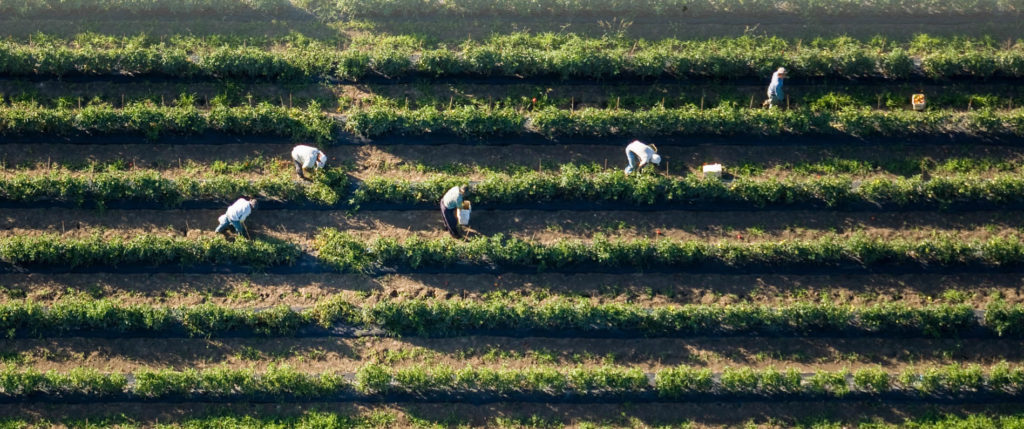By Frank Giles
Southeastern specialty crop growers have been seeking reform in farm labor policy for many years. Because of its nexus with immigration policy, meaningful solutions have been hard to come by. Proposals have been put forth, but partisan politics see those efforts stall.

That has forced many growers to utilize the U.S. Department of Labor (DOL) H-2A visa program to source labor legally. Florida and Georgia have become the No. 1 and No. 3 users of the program, respectively, in recent years.
But the program comes with its own slate of challenges, and those obstacles seem to mount with every new rule tacked onto the program. Among those was a significant increase in the adverse effect wage rate (AEWR) that took effect this year. Florida saw its wage rate jump by about 15%. Georgia was not far behind at nearly 14%.
The AEWR was meant to protect U.S. workers who might be displaced by H-2A workers. Most growers argue the domestic workforce does not exist when it comes to agriculture. During testimony earlier this year before the U.S. House of Representatives Judiciary Subcommittee Hearing on Immigration Policy and Enforcement, Chalmers Carr provided a vivid example of this. Carr is the president of Titan Farms, based in Ridge Spring, South Carolina. Titan Farms is a major peach producer with significant labor needs.
“There is an enormous misconception that our country has an abundant supply of Americans willing to work in the agriculture industry,” Carr testified. “Even with the recent recession, employment of domestic workers did not increase at the farm level.
“From 2010 through the end of 2012, my farm advertised 2,000 job opportunities. There were 483 U.S. referrals that applied for these jobs that were hired, accounting for less than 25% of my workforce needs. One hundred-nine of the referrals that were hired never showed up to work, and 321 of them quit — the vast majority in the first two days. Those who quit and those who never reported to work account for 89% of the workers who accepted the job.
“Of the 321 who reported to work, only 31 worked the entire season. There is no way I could have produced my peach and vegetable crops with a domestic workforce.”
MORE RULES PROPOSED
The DOL recently proposed a new rule pertaining to the H-2A visa program. The rule would layer more regulatory hurdles on top of an already cumbersome program. This is on top of the rules codified in March that adjusted the methods for determining the adverse effect wage rate (AEWR).
The rule would provide new protections for worker self-advocacy, including expanding and clarifying activities protected by the anti-retaliation provisions and rights of workers to invite and accept guests — including labor organizations — to employer-furnished housing. It also would make wages more predictable for agriculture workers by making new wage rates applicable immediately upon their publication in the Federal Register. The rule would enhance enforcement to improve program integrity by streamlining the debarment process for businesses that violate H-2A program rules.
In an earlier statement issued in response to the proposed rule, the Florida Fruit & Vegetable Association (FFVA) said, “the DOL is acting in place of Congress and circumventing U.S. Supreme Court decisions to create regulations which, in part, coerce farmers to give up private property rights in the name of worker protections. It’s clear the DOL has overstepped its authority… In light of congressional inaction, this trend of aggressive administrative rulemaking is exhausting the limited resources of U.S. growers and threatening the sustainability of an industry that helps feed, clothe and fuel the nation.”
The Georgia Fruit & Vegetable Growers Association (GFVGA) also is trying to sort out the details of the new H-2A proposal and what it means for specialty crop growers. According to Chris Butts, GFVGA executive vice president, there’s a lot in the proposal to unwind.
“Given the sheer volume of the proposed rule changes, we are still in the process of developing a firm understanding of exactly what is contained in the latest round of changes,” Butts said. “However, there are certainly aspects that cause concern and bring into question issues of employee privacy rights and employer and property rights.
“The importance of the H-2A program with respect to our ability to grow fresh fruits and vegetables cannot be overstated. Without these employees, our growers lose the ability to produce the produce that feeds our nation.”
CALL TO ACTION
According to Jamie Fussell, FFVA director of labor relations, agricultural labor reform is the ultimate goal, but there needs to be a focus on more immediate concerns, which include the proposed changes to the H-2A program.
“Rather than focusing so much on comprehensive agricultural labor reform, which we still need, we really are trying to narrow our focus to oversight of the DOL,” Fussell said. “We have to convince our friends in Congress that they need to pay more attention to what’s going on over on administrative side.”
Farm groups, including FFVA and GFVGA, are preparing comments on the proposed H-2A rule to submit to the Federal Register. Talking points are also being prepared for growers to utilize to submit their own comments on the rule.
“I would ask that each of you add your own comments more than just forwarding our notes. It is important to add your farm’s perspective to it,” Fussell said. “We really need to make some noise about this issue.”
“We should insist on a program that ensures a safe and healthy work environment and take swift action to remove those who are not compliant with program rules. We can do this without creating a program that becomes so complex and administratively costly so as to make it unusable for growers,” Butts said. “We will continue to review the rules and work with various industry partners to craft suggestions to DOL that help improve the program without unduly burdening growers.










